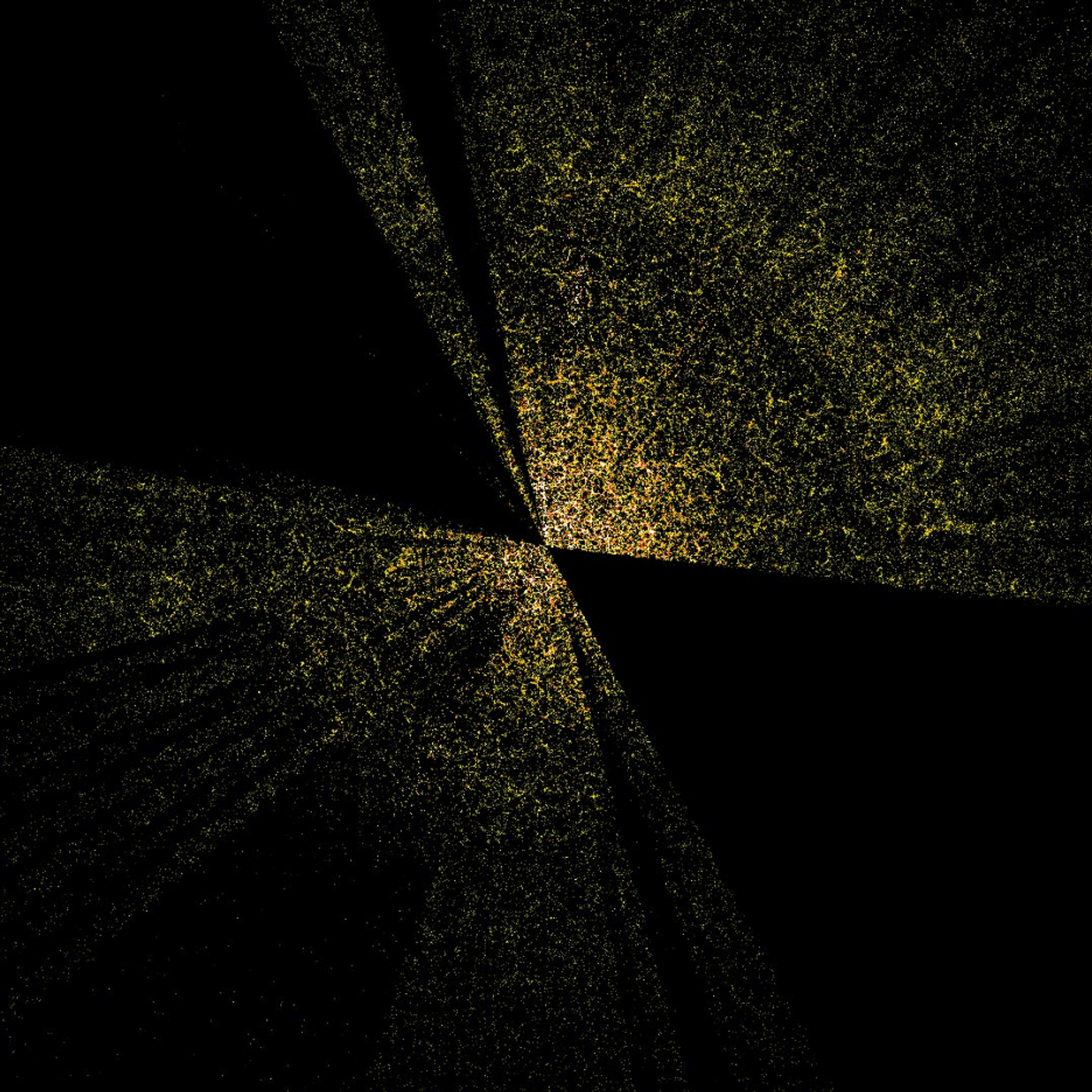The Largest 3-D Map of the Universe Created
The Berkeley Lab has released the most extensive three-dimensional map of the universe to date.
It’s a result of the lab’s Dark Energy Spectroscopic Instrument (DESI). DESI is an international science collab with the Department of Energy’s Lawrence Berkeley National Laboratory (Berkeley Lab), funded by the DOE’s Office of Science. The project was proposed more than ten years ago, and construction of the instrument began in 2015. It started its trial phase in 2019 but was shut down when the pandemic hit in early 2020. The project finally began collecting data in May 2021. DESI has been operating for seven months, but its mission is less than 10% completed.
DESI itself is an incredibly precise instrument, filled with over 5,000 robots that ensure optical positionings are accurate within 10 microns. “Ten microns is tiny,” explained Klaus Honschield, a physics professor at Ohio State University and co-Instrument Scientist of the DESI project. “It’s less than the thickness of a human hair. And you have to position each robot to collect the light from galaxies billions of light-years away. Every time I think about this system, I wonder how could we possibly pull that off? The success of DESI as an instrument is something to be very proud of.”
The instrument collects data by breaking down the color spectroscopy of different galaxies to determine how much of their light is redshifted. The concept of redshift is based on the doppler effect: as objects move away from each other, the frequency of their light is lower (in the red area of the visible electromagnetic spectrum). In general, the more redshifted a galaxy is, the farther away it is.
Redshift data is used to calculate how far away these distant galaxies are. From this information, scientists can create a 3D map of the universe, allowing them to observe clusters of galaxies and in turn, understand the very history of how the universe was formed. Galaxy clusters contain evidence of their initial formation, lending clues to how the universe expanded at its beginning.
Scientists want to understand how the origins of the universe— and how it began expanding— because it will help us to understand dark energy. It is estimated that about 70% of our universe is made of dark energy, a strange force that is causing our universe to continue to expand. As our universe expands, more dark energy is created, driving the universe outwards. Determining how dark energy has influenced our universe in the past is crucial to understanding how it will react in the future, which is what DESI will hopefully elucidate.
The big questions of dark energy will be answered as the project continues, but in the meantime, DESI is making historic strides in observing our universe. The map created by DESI charts more galaxies than all previous surveys combined. The instrument has already cataloged over 7.5 million galaxies and continues to collect data at the rate of over a million galaxies per month. With this trajectory, scientists predict that DESI will have cataloged over 35 million galaxies.
This new map is just the beginning. Astrophysicists are excited about the research opportunities that the DESI will create. The results of DESI’s survey so far were presented this past week in a webinar hosted by the Berkeley Lab. Julien Guy, one of the presenters of DESI’s work, is encouraged by its early success. “Our science goal is to measure the imprint of waves in the primordial plasma,” said Guy. “It’s astounding that we can actually detect the effect of these waves billions of years later, and so soon in our survey.”
Source: Berkeley Lab










